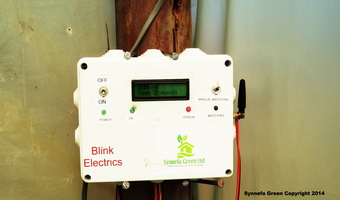 Greenhouse farmers can now monitor temperature and soil conditions while far away thanks to an automated sensor gadget that communicates about the greenhouse conditions to the farmer via an SMS. This means that a farmer doesn’t require to be available to monitor their greenhouse and exectute action as the sensor gadgets identify the problem and fixes it.
Greenhouse farmers can now monitor temperature and soil conditions while far away thanks to an automated sensor gadget that communicates about the greenhouse conditions to the farmer via an SMS. This means that a farmer doesn’t require to be available to monitor their greenhouse and exectute action as the sensor gadgets identify the problem and fixes it.
The new technology dubbed Mkulima Hodari, which is aimed at ensuring low costs for managing the greenhouse is aimed at conserving water and provision of virtual greenhouse maintenance. The aim of the technology is to help farmers juggle between farming and other chores and at the same time help keep low, the water bills especially for urban smart farmers.
According to Taita Ng’etich an Operations manager at Illuminum Greenhouse the firm behind the technology, most large scale commercial farmers due to their resounding economic power, are beating the smallholder farmers because they can afford the expensive automated farming equipment and tools and therefore their innovation is aimed at trying to bridge this gap with an affordable technique.
The Automated sensor gadgets for weather and irrigation in the greenhouse comprises of two temperature sensors, two humidity sensors and a soil moisture sensor. The sensors regulate the water valves in the green house based on the soil moisture level. When the water in the soil is used up by the plant, the reduced soil moisture level will trigger the water valve sensor to open the valves and irrigation commence automatically. The valve is opened or closed when the system receives the appropriate SMS command.
The SMS commands are documented in the sms commands section of the user manual. Depending on the soil moisture level the sensor can either start irrigation automatic or be prompted using the SMS command by the farmer. With the automatic option, the farmer receives an SMS alert informing him or her that irrigation has started and when it will be stopped plus the amount of water used in each schedule of the process.
“The controlled irrigation schedule ensures timely feeding for the crops as well as reducing wastage of water by over 60 percent. While using the manual system, a farmer opens the valves and estimates irrigation time as opposed to the more efficient automated system which will only open the valves based on the soil moisture levels and also ensure that only the needed amount is supplied to the crop,” explained Ng’etich.
Apart from the self regulation, the automated sensors can also be commanded by the farmer using his phone to either conduct or stop irrigation. By so doing, Ng’etich explained that the farmer is in control of his or her smart farm from any location as long as he is within a range of receiving mobile network coverage because the sensors are linked to the telephone operator SIM card.
The sensors are connected to an 18 watt solar panel but fitted with a battery backup that can keep it running for over five days. The technology can also help farmers in planning and determining the weather patterns in the area and therefore informing them on when and what to grow at what time of the year. The daily information detected by the sensors is recorded to a remote server and farmers using the technology given a website to access the details. From this server information, one is able to analyses all the vital weather patterns as pertains his greenhouse and eventually use this information to plan in future. “This is the introduction of smart farming where by farmers are taking the lead in new age farming skills that were initially a preserve for the rich commercial farming enterprises. In addition the farmer has reliable weather information of his locality and therefore less prone to any harsh climate changes,” noted Ng’etich .
The technology is also expected to benefit most farmers who are dealing with very delicate crops like Tomatoes and Green pepper. The innovators from Illuminum Greenhouse explained that automated feeding and irrigation program will erase the inconsistent feeding and irrigation schedules that are common with the conventional manual greenhouses.
“Most fertilizer and other crop nutrients are always mixed in the water for irrigation. For the manual case where one has to open the valve and close after irrigation, there are a times when because of commitments in life, one may not follow the schedule as outlined and as a result starve the crop at the most important time for it to develop causing long term effects that result in low and poor quality fruits. But the technology now eliminates these inconstancies and allows the farmer to command the feeding program of his greenhouse from the comfort of his office or even living room!”
The piloting of the technology started out in January 2014 among several farmers in South rift region. Its commercialization is expected to take place in August. A single Automated sensor for each greenhouse is deemed to cost about Sh20,000.
















Comments powered by CComment